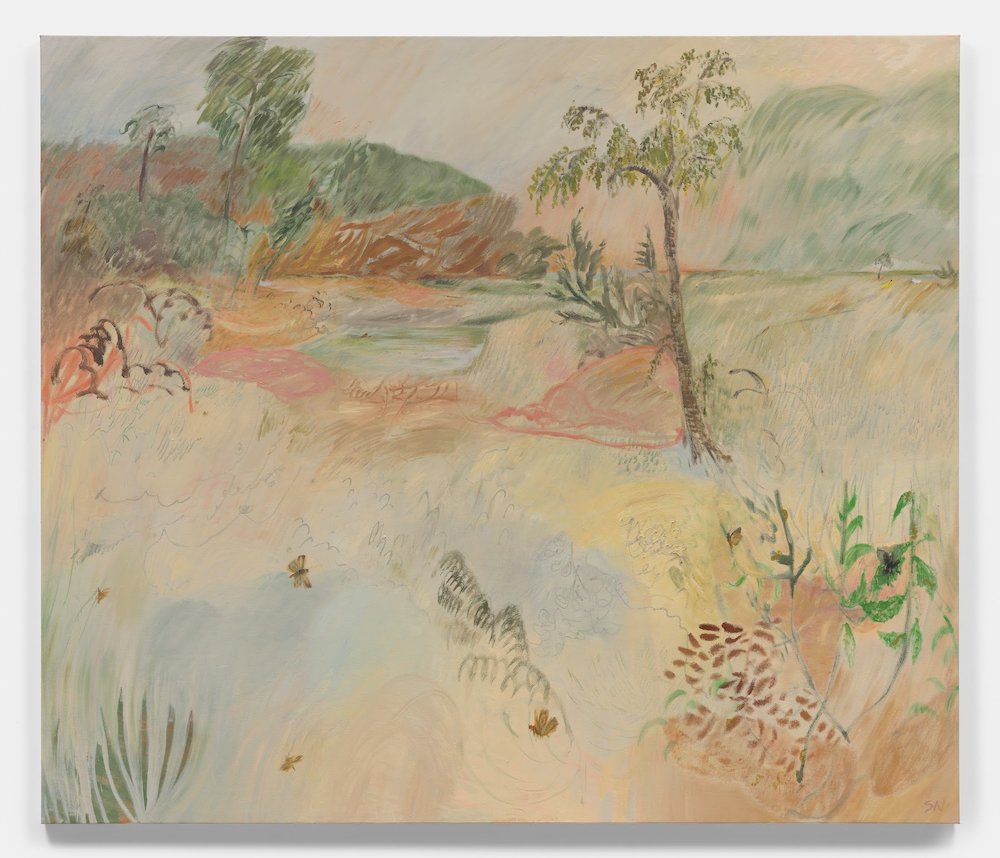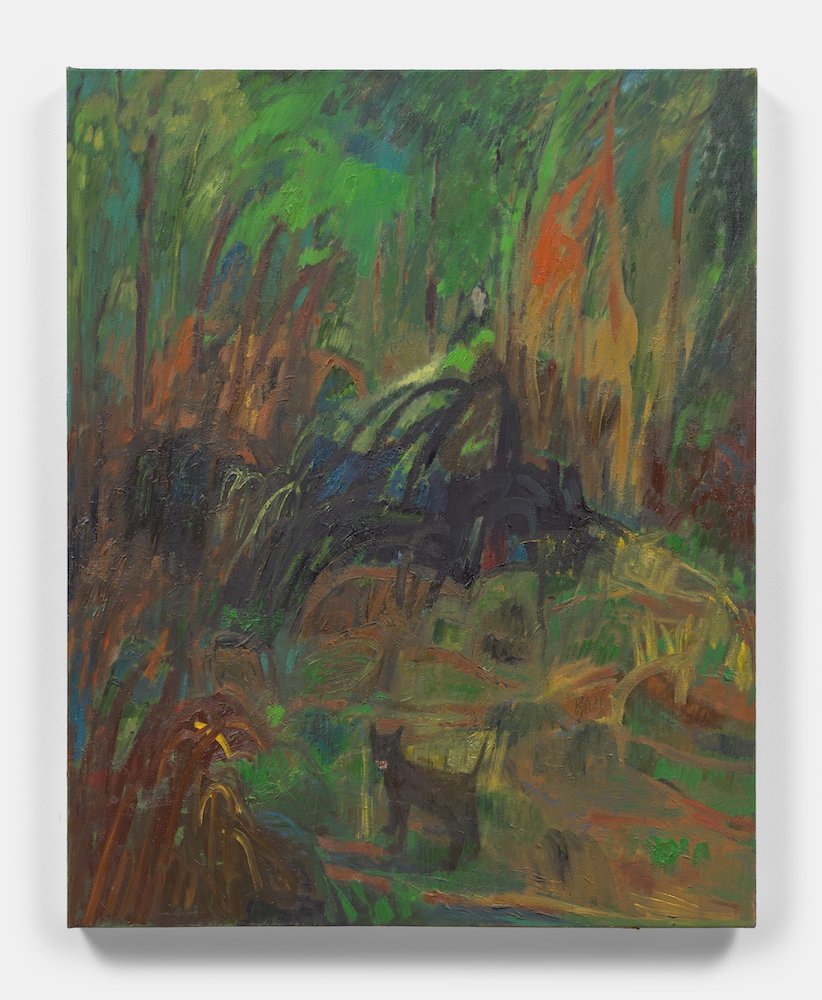Your cart is currently empty!
GALLERY ROUNDS: Soumya Netrabile Anat Ebgi

Nobody walks in Los Angeles but ducking out of the overheated concrete jungle and into “Between past and present/ Between appearance and memory,”—Soumya Netrabile’s vivid exhibition of wildlife, texture, line and color at Anat Ebgi—may inspire the urge to lace up your sneakers and take a meandering stroll through unexpected places.
Netrabile has created paintings reminiscent of—but not wholly belonging to—the natural world, where the fantastical and the experiential exist side-by-side. Many of the individual paintings balance a rush of imagination with a lingering unease, as if something incongruous or unexpected has appeared in the periphery of your vision to haunt the overall composition. The insightful installation of “Between past and present/ Between appearance and memory” reflects this dynamic: certain works are hung adjacently to either reinforce or undermine the specter of potential danger in these compositions in the form of animal life as if reminding us that there is an important difference between the actual natural world and the constructions we make in our own minds.
The juxtaposition of The Ground Beetle and The Rushing (both 2023), both larger-scale works given their own wall, highlights this theme. At first glance, the works are not particularly similar: in The Ground Beetle, the titular ground beetle emerges from the top right corner, its body a softly reflective brown-blue, prepared to invade a miasma of abstractly colorful brushwork, where leaves and branches are referenced more than depicted. Meanwhile, the landscape of The Rushing is more immediately legible, divided roughly in two by sleekly painted flowing water at the bottom half of the composition, with a grove of trees in the background. However, upon looking closely, The Rushing reveals the presence of a sketchily rendered tiger lurking in that thicket of trees in the top right of the painting—like the beetle’s position in The Ground Beetle. The tiger creates a sense of alarm, drawing the eye back to the prey implied by dark ripples in the water’s surface, and reinforced by oversized Ground Beetle, suggesting an incipient attack of a different animal predator.

There is an almost comic contrast between The Dog Family and The Water Hole. The former features the heightened menace of a sharp-toothed dog that hover at the bottom of the picture plane against an electric plane of Cezanne-esque treetops and blackish vines. The latter shows an effusion of butterflies dispersed across the soft pastel blues and pinks of water.and blackish-green vines, the effusion of butterflies in the undefined, soft pastel blues and pinks of The Water Hole, located on a nearby wall, comes across as almost comic in contrast. (Additionally, a surprising and charming pictorial reference can be found in the top right of The Water Hole—a female figure seated in the grass, reaching further towards the background, shown from behind à la Wyeth’s Christina’s World.) A frisson of danger is found in 2pm in the Park—the work most indebted to the pastoral impulses of the Impressionists, save for a blurry, humanoid figure in the background, whose presence almost constitutes a jump scare.
Scroll, a massive work on paper laid horizontally and low to the ground, invites the viewer to mimic the artist’s wandering pathway that made the painting observations/dreams—to stroll along the Scroll, if you will. Scroll has no clear end and no beginning, recalling the feeling of flashback, of being plunged into the middle of a memory with no context. You crane your head to make out the shapes of trees and leaves rendered in black and rust, only for the rhythm of your gaze to be disrupted by actual leaves and rocks brought back by the artist and laid down on the paper, grounding the imagined space in traces of real space.
While several of the landscapes evoke Matisse or Van Gogh, and even occasionally Stettheimer with their grand compositions, soft brushwork, and bright candy colors, it’s the unexpected nod to Toulouse-Lautrec in Last Red Flowers, Autumn Garden that leaves a lingering effect. Netrabile depicts a cluster of plants in moody, rich reds and greens on a relatively small canvas—almost portrait-sized at 16 x 20—accented with golden-orange blurs that add a sense of frantic motion and evoke emanating light. The artist imbues each element of Last Red Flowers with the drama of theatrical performance: for example, lighter greens halo dark, individual round leaves, creating a backlighting effect, and brighter greens on the undersides of leaves and stalks, as if each component is carefully lit from below. It’s as if these last red flowers are rushing the stage for a final round of applause before the end of the season—before the end of the show.